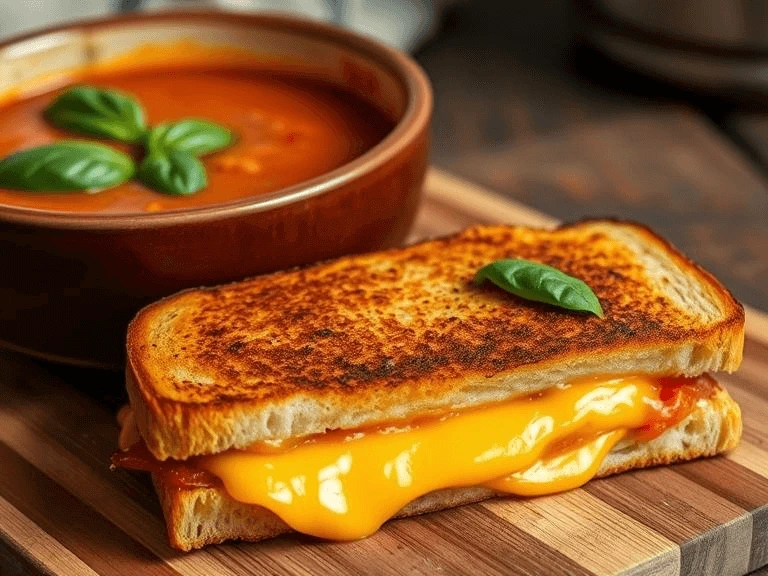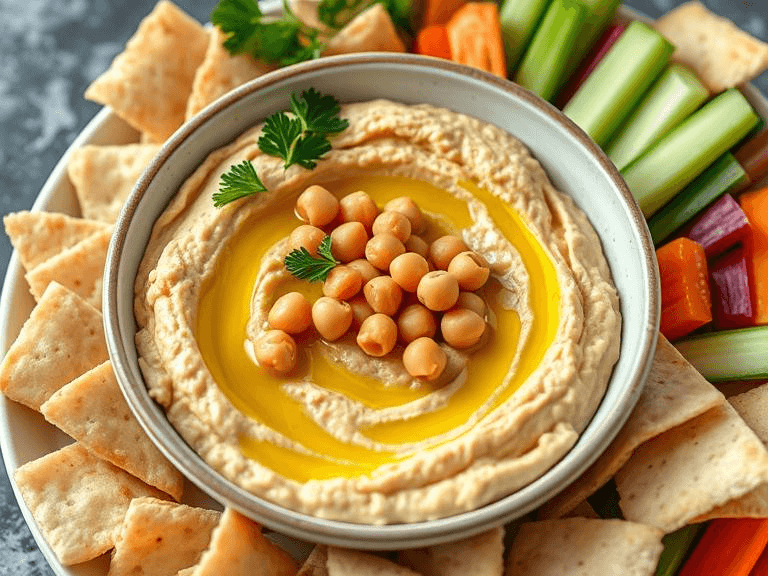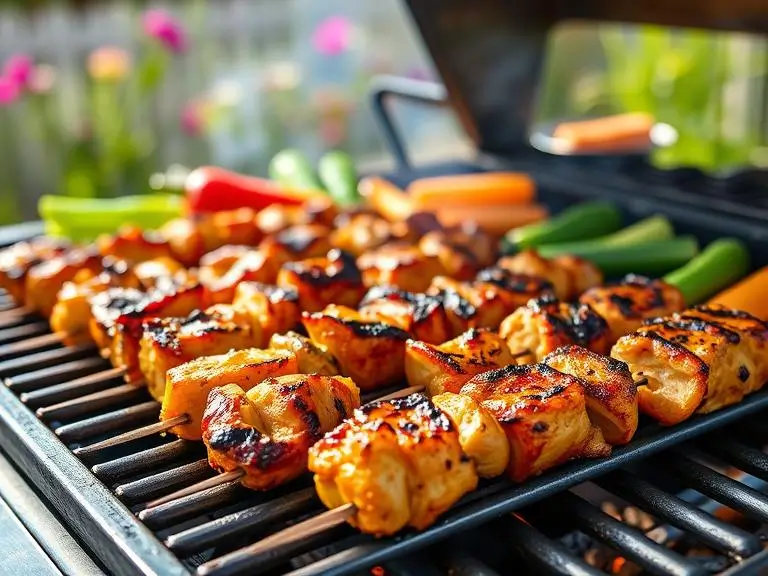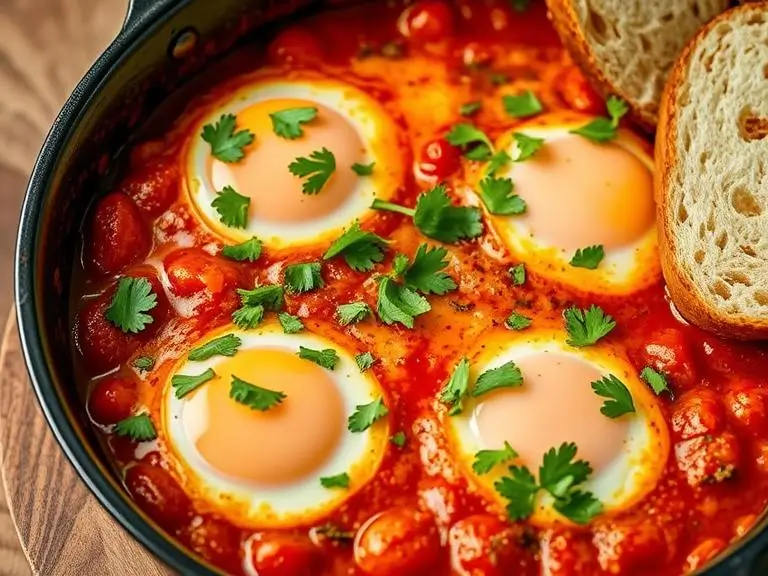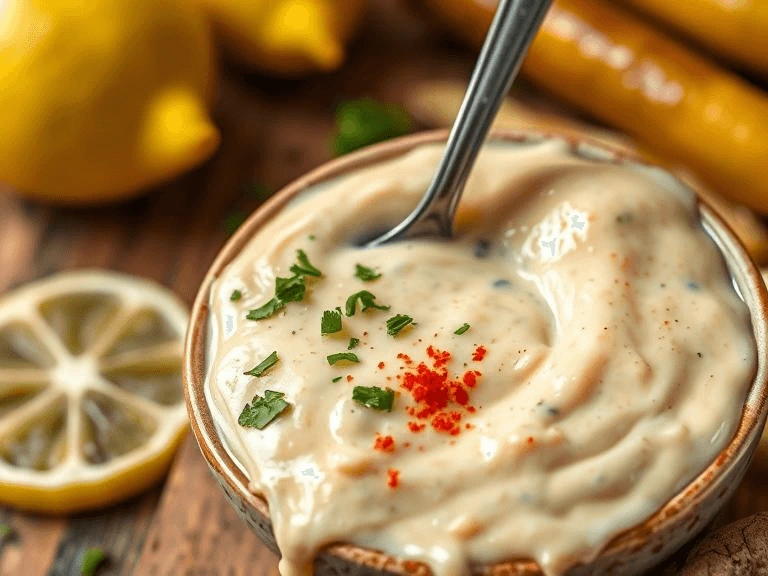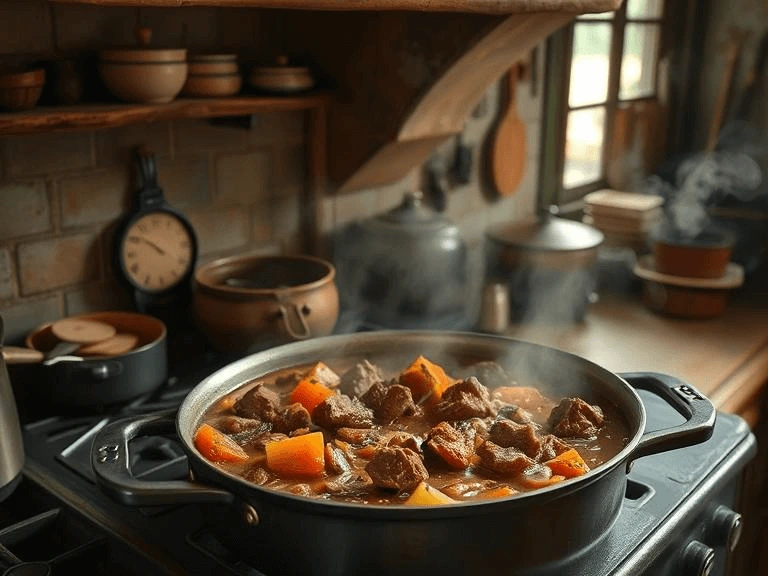How to Make Chicken Kebab at Home Like a Pro
Table of Contents
Have you ever found yourself daydreaming about those perfectly charred, juicy chicken kebabs from your favorite restaurant? The ones with that irresistible blend of spices that seem impossible to recreate at home?
Most home cooks believe restaurant-quality chicken kebabs require specialized equipment or secret ingredients that are out of reach. The disappointing results from previous attempts might have left you ordering takeout instead of firing up your grill.
But what if you could master the art of making chicken kebabs in your own kitchen, impressing family and friends with professional-level results? The good news is that creating mouthwatering chicken kebabs at home isn’t as complicated as it seems.
In this comprehensive guide, we’ll walk you through everything you need to know about crafting perfect chicken kebabs from scratch. From selecting the right cuts of meat and creating authentic marinades to mastering cooking techniques that restaurants don’t want you to know.
Whether you’re planning a casual backyard gathering or an elaborate dinner party, these chicken kebab techniques will elevate your cooking game to professional heights. By the time you finish reading, you’ll have all the knowledge you need to create kebabs that might just outshine your favorite restaurant’s version.
The History and Cultural Significance of Chicken Kebabs
The word “kebab” originates from the Arabic word “kabāb,” meaning to roast or burn. Chicken kebabs have a rich history spanning centuries across the Middle East, Mediterranean, and South Asia. Traditional chicken kebab recipes vary by region, each offering unique flavor profiles and preparation methods.
In Turkey, şiş kebab (shish kebab) features marinated chicken pieces threaded onto metal skewers and grilled over charcoal. Persian joojeh kabab uses saffron and lemon in the marinade, creating distinctively yellow chicken kebabs with a tangy flavor. Indian chicken tikka kebabs incorporate yogurt and warming spices like garam masala for a creamy, complex taste.
Regional Variations of Chicken Kebabs Around the World
Different cultures have adapted chicken kebabs to reflect local tastes and ingredients:
- Mediterranean Chicken Kebabs: Often feature olive oil, lemon, oregano, and garlic
- Middle Eastern Chicken Kebabs: Commonly use cumin, coriander, and sumac for authentic flavor
- South Asian Chicken Kebabs: Incorporate yogurt with warming spices like garam masala and turmeric
- American-Style Chicken Kebabs: Frequently include barbecue sauce or teriyaki-inspired marinades
According to food historian Dr. Krishnendu Ray of New York University, “Chicken kebabs represent one of humanity’s earliest cooking techniques—skewering meat and cooking it over fire—that has evolved across cultures while maintaining its essential appeal.” [Source: Journal of Culinary Anthropology]
Essential Equipment for Perfect Chicken Kebabs
Creating restaurant-quality chicken kebabs at home starts with the right tools. While fancy equipment isn’t necessary, a few key items will significantly improve your results.
Skewers: Metal vs. Wooden for Chicken Kebabs
| Skewer Type | Advantages | Disadvantages | Best For |
|---|
| Metal Skewers | – Reusable – Won’t burn – Conduct heat to cook from inside | – Can get very hot – May overcook chicken – More expensive | – Regular kebab makers – Even cooking – Professional results |
| Wooden Skewers | – Inexpensive – Disposable – Won’t get too hot to handle | – Require soaking – Can burn – May splinter | – Occasional kebab cooking – Beginners – Large gatherings |
For wooden skewers, soak them in water for at least 30 minutes before threading your chicken kebab ingredients to prevent burning. Metal skewers with flat edges prevent the chicken from rotating when you flip them.
Grilling Options for Homemade Chicken Kebabs
You don’t need a professional grill to make excellent chicken kebabs. Here are your options:
- Outdoor Charcoal Grill: Provides authentic smoky flavor ideal for traditional chicken kebabs
- Gas Grill: Offers consistent temperature control for even cooking
- Indoor Grill Pan: Perfect for apartment dwellers wanting to make chicken kebabs year-round
- Oven Broiler: A solid backup option when grilling isn’t possible
“The key to perfect chicken kebabs isn’t necessarily the equipment but understanding heat management. A $20 charcoal grill can produce better kebabs than a $1,000 setup if you know how to control temperature zones.” – Chef Michael Psilakis, author of “How to Roast a Lamb”
Selecting the Best Chicken for Kebabs
The foundation of exceptional chicken kebabs starts with choosing the right cut of meat. Not all chicken parts are created equal when it comes to skewering and grilling.
Best Chicken Cuts for Juicy Kebabs
Chicken thighs reign supreme for kebabs due to their higher fat content, which provides:
- Natural moisture retention during high-heat cooking
- More forgiving cooking time (less likely to dry out)
- Richer flavor that stands up to bold marinades
Chicken breast can also work for kebabs but requires more attention:
- Benefits from longer marination (minimum 2 hours, ideally overnight)
- Needs more careful monitoring to prevent overcooking
- Works best when cut into slightly larger pieces (1.5-inch cubes)
How to Properly Cut Chicken for Kebabs
The size and consistency of your chicken pieces dramatically affect cooking results. For perfect chicken kebabs:
- Trim excess fat and remove any tendons or cartilage
- Cut chicken into uniform 1.25-1.5 inch cubes
- Ensure pieces are similar size for even cooking
- Cut against the grain when possible to increase tenderness
Pro tip: Partially freeze chicken for 20-30 minutes before cutting to make precise cubes easier to achieve. Uniform pieces ensure your chicken kebabs cook evenly, with all pieces reaching the perfect doneness simultaneously.
Mastering Chicken Kebab Marinades
A great marinade transforms ordinary chicken into extraordinary chicken kebabs by:
- Tenderizing the meat through acid or enzyme action
- Infusing flavor deep into the chicken pieces
- Creating a foundation for delicious caramelization during cooking
Essential Components of Chicken Kebab Marinades
Every successful chicken kebab marinade contains these fundamental elements:
- Fat: Olive oil, yogurt, or mayonnaise to distribute flavors and prevent sticking
- Acid: Lemon juice, vinegar, or yogurt to tenderize meat
- Salt: Enhances flavor and helps chicken retain moisture
- Aromatics: Garlic, onions, and herbs provide depth of flavor
- Spices: Create signature flavor profiles specific to your chicken kebabs
Classic Chicken Kebab Marinade Recipes
Mediterranean Lemon-Herb Chicken Kebab Marinade
- 1/4 cup extra virgin olive oil
- 3 tablespoons fresh lemon juice
- 4 garlic cloves, minced
- 2 tablespoons fresh oregano, chopped
- 1 tablespoon fresh thyme leaves
- 1 teaspoon lemon zest
- 1 teaspoon salt
- 1/2 teaspoon black pepper
Yogurt-Based Middle Eastern Chicken Kebab Marinade
- 1 cup plain Greek yogurt
- 2 tablespoons olive oil
- 4 garlic cloves, minced
- 1 tablespoon lemon juice
- 2 teaspoons ground cumin
- 1 teaspoon ground coriander
- 1 teaspoon paprika
- 1 teaspoon salt
- 1/2 teaspoon ground black pepper
- 1/4 teaspoon cayenne pepper (optional)
“The secret to exceptional chicken kebabs lies in allowing enough marinating time. The transformation happens not in minutes but hours, as the marinade penetrates the meat fibers and works its magic.” – Chef Yotam Ottolenghi
Marination Techniques and Timing for Chicken Kebabs
Proper marination is crucial for developing flavor in your chicken kebabs. The process isn’t just about combining ingredients but understanding the science of flavor penetration.
Optimal Marination Times for Chicken Kebabs
| Marinade Type | Minimum Time | Ideal Time | Maximum Time | Notes |
|---|
| Acidic (lemon/vinegar-based) | 30 minutes | 2-4 hours | 12 hours | Prolonged exposure can make chicken mushy. |
| Yogurt-based | 2 hours | 6-8 hours | 24 hours | Enzymes tenderize more gently than acids. |
| Oil-herb based (no acid) | 1 hour | 4-6 hours | 24 hours | Safest for longer marination. |
| Enzyme-based (papaya/pineapple) | 15 minutes | 30-45 minutes | 2 hours | Over-marinating breaks down meat too much. |
For weeknight chicken kebabs, prepare your marinade in the morning before work for perfect results by dinner time. For weekend entertaining, marinate overnight for maximum flavor development.
Marination Containers and Methods
The vessel you use impacts how effectively your chicken kebabs absorb marinade:
- Zip-top bags: Remove excess air and allow marinade to surround all chicken surfaces
- Glass containers: Non-reactive and won’t absorb odors, good for acidic marinades
- Vacuum sealers: Accelerate marinade penetration by removing air barriers
- Avoid metal containers: Can react with acidic marinades, potentially affecting flavor
Common mistake: Placing marinating chicken kebab meat on the counter. Always marinate in the refrigerator to prevent bacterial growth, regardless of marinade type.
Vegetable Pairings for Complete Chicken Kebabs
While the star of chicken kebabs is undoubtedly the meat, vegetables add color, texture, and nutritional balance. The key is selecting vegetables that cook at roughly the same rate as your chicken.
Best Vegetables for Chicken Kebabs
Ideal vegetable companions for chicken kebabs include:
- Bell peppers: Sweet flavor, colorful presentation, similar cooking time to chicken
- Red onions: Develop sweetness when grilled, provide aromatic flavor
- Zucchini: Mild flavor complements chicken, holds shape well
- Cherry tomatoes: Add juicy bursts of flavor, best added to skewers whole
- Mushrooms: Absorb marinade well, develop umami flavor when grilled
Strategies for Even Cooking with Mixed Ingredients
To ensure your vegetables and chicken cook evenly:
- Size matching: Cut vegetables to similar size as chicken pieces (approximately 1.5 inches)
- Separate skewers: For complete control, place chicken and vegetables on separate skewers
- Strategic placement: Position quicker-cooking vegetables in cooler grill zones
- Par-cooking: Pre-cook dense vegetables like potatoes before skewering
Pro tip: Brush vegetables with olive oil and season separately from chicken kebabs to prevent cross-contamination and allow each component to shine with its own flavor profile.
Step-by-Step Assembly of Perfect Chicken Kebabs
Creating professional-looking chicken kebabs requires attention to detail during the assembly process. A thoughtfully constructed kebab cooks more evenly and presents more beautifully.
Threading Techniques for Chicken Kebabs
Follow these steps for perfectly assembled chicken kebabs:
- Remove chicken from marinade, gently patting off excess (but not completely dry)
- Thread chicken pieces with slight space between each (about 1/4 inch)
- If using vegetables, alternate with chicken or create separate skewers
- Leave about 2 inches of skewer exposed on each end for handling
- Ensure all pieces are secure and won’t rotate independently
Common mistake: Overcrowding skewers. This prevents heat circulation and leads to unevenly cooked chicken kebabs. Allow proper spacing for consistent results.
Preparation Before Cooking
Set yourself up for success with these final preparations:
- Allow threaded chicken kebabs to come to room temperature for 15-20 minutes before cooking
- Prepare your grill or cooking surface ahead of time
- Have a clean platter ready for cooked kebabs
- Keep basting sauce (if using) and tools readily accessible
- Consider preparing extra skewers as chicken kebabs tend to disappear quickly!
Cooking Methods for Perfect Chicken Kebabs
The cooking method you choose significantly impacts the final flavor and texture of your chicken kebabs. Understanding temperature control is essential regardless of your chosen method.
Grilling Chicken Kebabs to Perfection
Grilling is the traditional and preferred method for cooking chicken kebabs:
- Preheat grill: Medium-high heat (375-450°F) is ideal for chicken kebabs
- Clean and oil grates: Prevents sticking and helps achieve grill marks
- Create temperature zones: Direct heat for searing, indirect for finishing
- Position kebabs properly: Place skewers perpendicular to grates
- Rotation technique: Turn each chicken kebab 1/4 rotation every 2-3 minutes
- Timing: Total cooking time 10-14 minutes depending on size and heat
Alternative Cooking Methods for Chicken Kebabs
No grill? No problem! These alternatives produce excellent chicken kebabs:
Oven Broiling Method:
- Position rack 6 inches from heating element
- Preheat broiler on high
- Place chicken kebabs on broiler pan or lined baking sheet
- Broil 5-7 minutes per side, watching carefully to prevent burning
Grill Pan Method:
- Preheat pan over medium-high heat
- Lightly oil surface
- Cook chicken kebabs 4-5 minutes per side
- Cover briefly (1-2 minutes) if needed to ensure thorough cooking
Air Fryer Method (modern alternative):
- Preheat air fryer to 380°F
- Lightly spray basket with oil
- Cook chicken kebabs for 10-12 minutes, turning halfway
- May need to trim skewers to fit (or use shorter skewers)
Testing for Doneness and Food Safety
Properly cooked chicken kebabs should be both safe and delicious. The USDA recommends chicken reach an internal temperature of 165°F for food safety.
Using Meat Thermometers for Chicken Kebabs
For foolproof chicken kebabs:
- Insert an instant-read thermometer into the center of several chicken pieces
- Verify each piece reaches 165°F minimum
- Check different areas of the grill as cooking temperatures may vary
- Allow for carryover cooking (temperature rises 5-10°F after removal from heat)
Visual Cues for Perfectly Cooked Chicken Kebabs
While a thermometer is most reliable, these visual indicators help gauge chicken kebab doneness:
- Clear (not pink) juices when pierced
- Firm but still slightly yielding texture
- Light golden-brown grill marks
- Slight caramelization on edges
- No visible pink meat, especially near the bone if using bone-in pieces
Food safety note: Never use the same plate or utensils for raw and cooked chicken kebabs without thoroughly washing between uses to prevent cross-contamination.
Serving Suggestions and Accompaniments for Chicken Kebabs
Chicken kebabs are versatile and pair beautifully with various accompaniments that complement their flavors and create a complete meal experience.
Traditional Side Dishes for Chicken Kebabs
Authentic pairings enhance the cultural experience of your chicken kebabs:
- Rice preparations: Persian saffron rice, Greek lemon rice, or simple herbed rice
- Bread options: Warm pita, naan, lavash, or flatbread for wrapping kebabs
- Salads: Tabbouleh, Greek salad, or simple cucumber-tomato salad
- Dips and sauces: Tzatziki, hummus, toum (garlic sauce), or tahini sauce
Creative Serving Ideas for Chicken Kebabs
Elevate your chicken kebab presentation with these ideas:
- Kebab stations: Allow guests to slide their own chicken kebabs off skewers onto plates
- Wrap assemblies: Provide warm flatbreads and various toppings for DIY wraps
- Kebab bowls: Serve over grain bowls with complementary vegetables
- Appetizer portions: Create mini chicken kebabs on shorter skewers for parties
“The beauty of chicken kebabs lies in their versatility. They bridge the gap between casual and elegant dining, equally at home at a backyard barbecue or a sophisticated dinner party.” – Sabrina Ghayour, author of “Persiana”
I’ll create a comprehensive conclusion and FAQ section to complete your chicken kebab article. Here they are:
Conclusion: Your Journey to Perfect Chicken Kebabs Starts Now
Mastering the art of homemade chicken kebabs isn’t just about following a recipe—it’s about understanding the principles that make them exceptional. From selecting the right cut of chicken and creating balanced marinades to perfecting your cooking technique, each step contributes to creating restaurant-quality chicken kebabs in your own kitchen.
Remember that great chicken kebabs come down to a few fundamental principles:
- Quality ingredients, especially the right cut of chicken
- Proper marination time for maximum flavor penetration
- Consistent cutting techniques for even cooking
- Attention to cooking temperature and timing
- Complementary sides and sauces that enhance the kebab experience
The beauty of chicken kebabs lies in their versatility. Once you’ve mastered the basics, you can experiment with flavors from around the world, creating signature chicken kebabs that reflect your personal taste preferences and cultural inspirations.
Don’t be discouraged if your first attempt isn’t perfect—each batch of chicken kebabs you make will teach you something new about the process. Take notes, make adjustments, and soon you’ll develop an intuitive sense for creating kebabs that rival any restaurant’s offering.
Why not pick up some quality chicken this weekend and put these techniques into practice? Your friends and family will be amazed at your transformation into a chicken kebab master. Share your creations on social media with #HomemadeChickenKebabs and let us know how these tips worked for you!
Read More : Beef Stew 3 Quick Tips for Perfect Dinner
Frequently Asked Questions About Chicken Kebabs
Can I make chicken kebabs in advance?
Yes, you can prepare chicken kebabs up to the skewering stage 24 hours in advance. Keep the threaded kebabs covered in the refrigerator. Remove them 20-30 minutes before cooking to allow them to come to room temperature for more even cooking.
Why are my chicken kebabs dry?
Dry chicken kebabs usually result from overcooking, using lean chicken breast without sufficient marination, or cutting the chicken pieces too small. Use chicken thighs, marinate properly, keep pieces uniform at 1.5 inches, and use a meat thermometer to avoid cooking beyond 165°F.
Can I freeze chicken kebabs?
You can freeze marinated chicken for kebabs before skewering. Place in freezer bags with marinade for up to 3 months. Thaw completely in the refrigerator before threading onto skewers and cooking. Avoid freezing with vegetables as they’ll become soggy when thawed.
What’s the best way to reheat leftover chicken kebabs?
To reheat chicken kebabs without drying them out, remove meat from skewers and heat in a covered pan with a tablespoon of water over medium-low heat. Alternatively, wrap in foil and heat in a 300°F oven for 10-15 minutes. Avoid microwave reheating if possible as it can toughen the meat.
Can I use chicken kebab marinade as a sauce?
Never use the same marinade that contained raw chicken as a serving sauce due to food safety concerns. If you want a complementary sauce, reserve a portion of the marinade before adding chicken, or make a fresh batch using similar ingredients.
How do I prevent vegetables and chicken from cooking unevenly on kebabs?
For evenly cooked chicken kebabs, either place ingredients requiring similar cooking times together on the same skewer, or use separate skewers for meat and vegetables. This allows you to remove components as they finish cooking, ensuring nothing is under or overcooked.
What’s the minimum time I can marinate chicken kebabs if I’m short on time?
While longer marination produces better chicken kebabs, a minimum of 30 minutes with an acidic marinade or 1 hour with a yogurt-based marinade will impart some flavor. To accelerate flavor penetration, cube the chicken smaller (about 1 inch) and ensure marinade completely covers all surfaces.
Are chicken kebabs healthy?
Chicken kebabs can be quite healthy, especially when made with lean chicken and plenty of vegetables. They’re high in protein, relatively low in fat (particularly when using breast meat), and cooking methods like grilling allow excess fat to drip away. Control sodium content by watching salt levels in your marinade.
Did this method work for you? Tell us your results!?
There are no reviews yet. Be the first one to write one.


